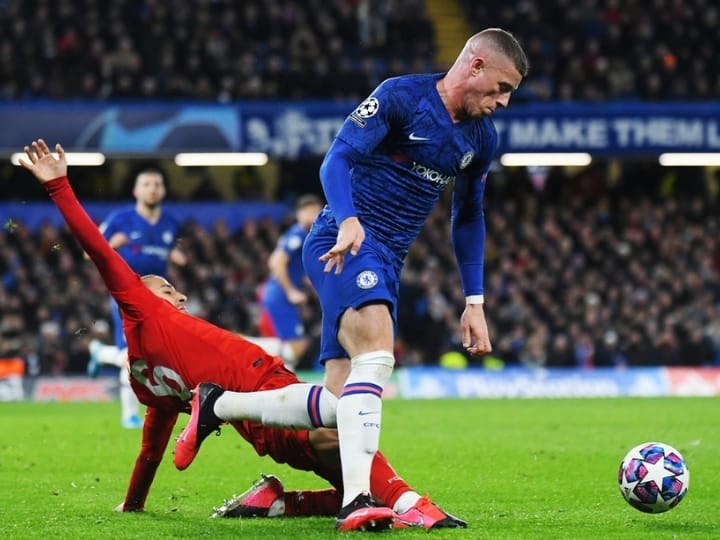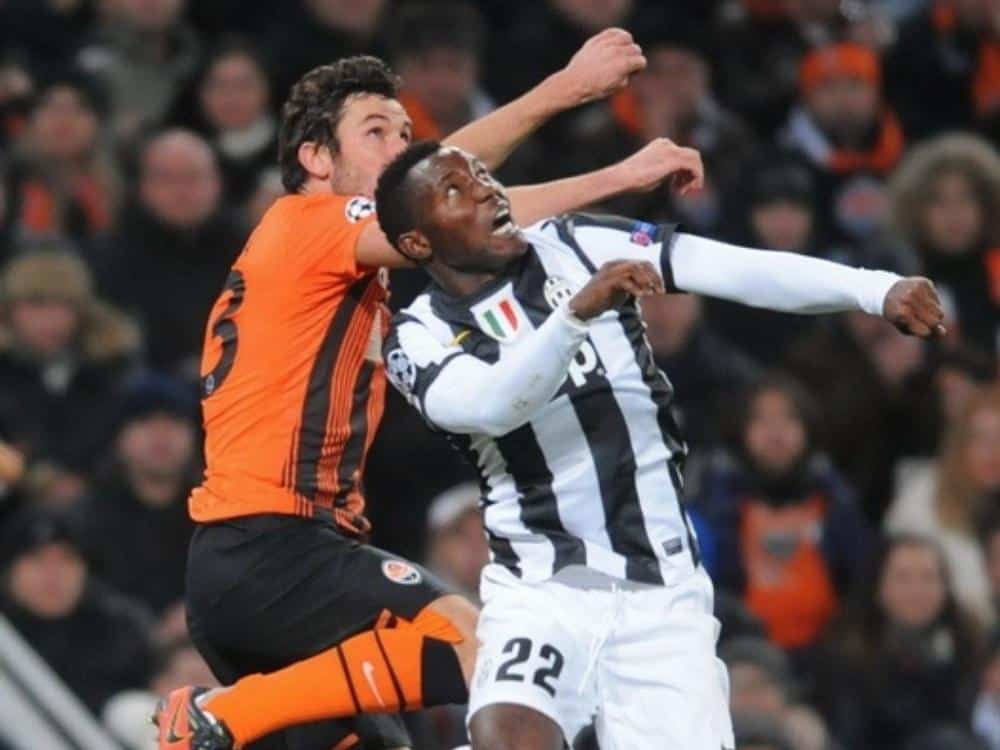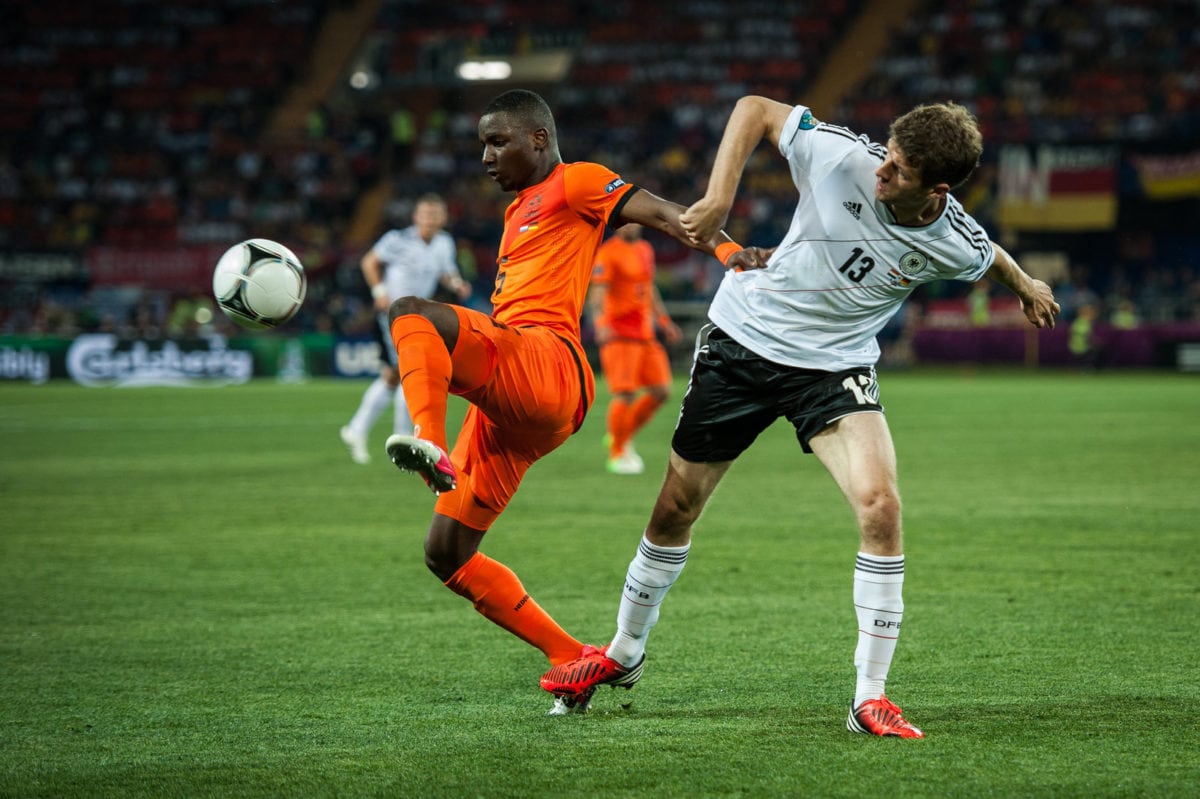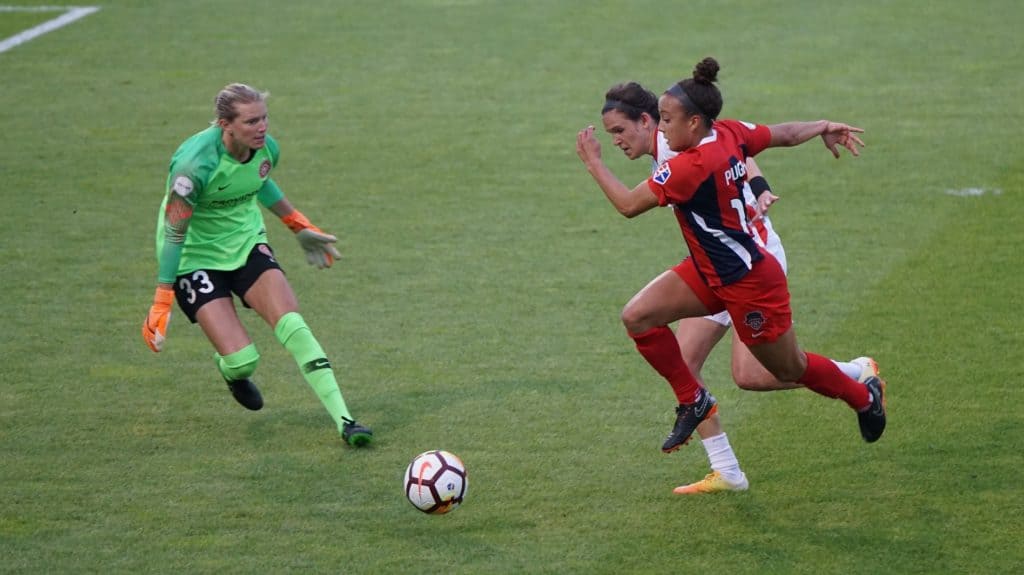Share the post "How To Be More Aggressive in Soccer (Without Fouling)"
Soccer is a contact sport, so there’s room for some aggression. But if you go over the top, the referee will call a foul. The trick is to get to maximum aggression without conceding a free kick or a penalty.
It’s not easy, but we’re here to help you out.
Some key points we’ll look at today are:
- Aggressive play
- Hustling for the ball
- Timing tackles

How to be aggressive in soccer without fouling
In soccer, you can be aggressive without fouling in these 5 ways:
- Shoulder charge
- Put pressure on the ball
- Get to the ball first
- Mark players closely
- Time your tackles
Let’s look at these 5 areas more closely and outline ways you can be aggressive without fouling.

1. Shoulder charge
The shoulder charge (or shoulder tackle) is a great way to be aggressive in soccer without fouling. But you can’t just charge in any way you like. There’s a technique to an aggressive shoulder charge that minimizes your chances of fouling.
You’ll want to ensure your shoulder makes contact with the opposing player’s shoulder.
Don’t charge into their back or chest because the referee will give a foul.
Knock your shoulder against theirs with enough force to nudge them off the ball. It won’t take as much force as you might think. Getting them off balance will give you a great chance of winning the ball without fouling.
Now, we should say that it’s up to the referee to give a foul. But the chance of a foul is low if you do a shoulder charge the right way and with just enough aggression.
Remember that you don’t want to go over the top because that can lead to dangerous play. Then, the referee will give a foul against you.
Check out this shoulder charge drill to get an idea of the technique:
This drill shows a forward trying to create space to shoot on goal. But a defender can use the same technique to get space to get the ball away from attackers.
Notice in the drill that the player didn’t raise his elbow. That makes sure he’s charging with the shoulder. Otherwise, it’d be a foul.
You can practice this with your friends at home or in training. The more you practice it, the better you’ll get.

2. Put pressure on the ball
To put pressure on the ball means getting close to the player with the ball. You don’t want to give them too much space. They can pick out a pass or shoot on goal if they have space.
It’s aggressive play to get close to the player with the ball. You don’t even have to touch them.
Just make sure you make things more difficult for them.
So, when you see a player with the ball, be aggressive and get close to them. If they’re running with the ball, run beside them and shield your goal.
If they stop with the ball, stay close in front of them and block them from moving further or passing.
You don’t have to tackle.
That’s important to highlight because sometimes people think to be aggressive you have to tackle hard. But it’s not like that at all.
You can play aggressively just by making yourself a pest to the opposing players.
Close them down and don’t give them space. That is, put pressure on the ball.
If you play with that type of aggression, coaches will notice. They love seeing players working hard like that.

3. Get to the ball first
In a scenario where no player has the ball, it’s aggressive play to try your best to get to the ball first. This could involve running super hard. Or you could be hustling with another player to get the ball.
Maybe you and another player are running shoulder-to-shoulder. Trying your hardest to get to the ball first is aggressive play.
Now, maybe the other player is a faster runner than you and gets to the ball first. But that doesn’t matter because you tried your hardest. You were aggressive, and you hustled to get to the ball.
And guess what, after you put in that effort, you’re close to the ball. You’re in a great position to do precisely what we discussed in the previous section: put pressure on the ball.
So, get to the ball first, or try your best. You don’t have to push or pull the other player and give away a foul. Hustle with aggression and run for the ball like it’s yours.
That type of play leaves you in a great position, even if you don’t get the ball first.

4. Mark players closely
This is very similar to putting pressure on the ball, but you can do it when the player doesn’t have the ball. Sometimes it’s called man-marking.
Imagine the opposing team has a corner kick. They’ll kick the ball into the 18-yard box.
You can be aggressive by marking a player closely.
Stay close to them and don’t let them out of your sight. This will put pressure on them and make things very difficult for them.
You can stay within touching distance of them. Or you can even put your chest against their back and keep them off balance.
Just don’t grab them with your hands or pull their jersey. That’ll be too aggressive, and the referee will give a foul.
Marking players closely and not giving them space is aggressive play without fouling.
And it doesn’t have to be done only on corner kicks. Check out the video below of Marcelo Bielsa’s Athletic Bilbao man-to-man marking Pep Guardiola’s Barcelona. It’s an aggressive style of play (the video quality is very poor, but it’s a great example).
5. Time your tackles
Tackling is an aggressive part of soccer, especially sliding tackles, but time them right and you won’t foul. You don’t want to lunge in at the first chance. Be patient and choose the right time.
If you wait for the right moment, you can come in with an aggressive tackle without fouling.
The sliding tackle is the most aggressive one in soccer. And you want to time it well because there’s a high chance of a foul if you don’t. It’s not easy for beginners, but with practice, you’ll be timing your sliding tackles well in no time.
That’s a great way to be aggressive in soccer without fouling.
Watch this video on how to slide tackle to get started.
Those are our 5 ways to be aggressive in soccer without fouling. If you follow these, you can play with more aggression without hearing the referee’s whistle too often. Just remember not to go over the top.
Share the post "How To Be More Aggressive in Soccer (Without Fouling)"
Joel is a seasoned soccer journalist and analyst with many years of experience in the field. Joel specializes in game analysis, player profiles, transfer news, and has a keen eye for the tactical nuances of the game. He played at various levels in the game and coached teams - he is happy to share his insight with you.



